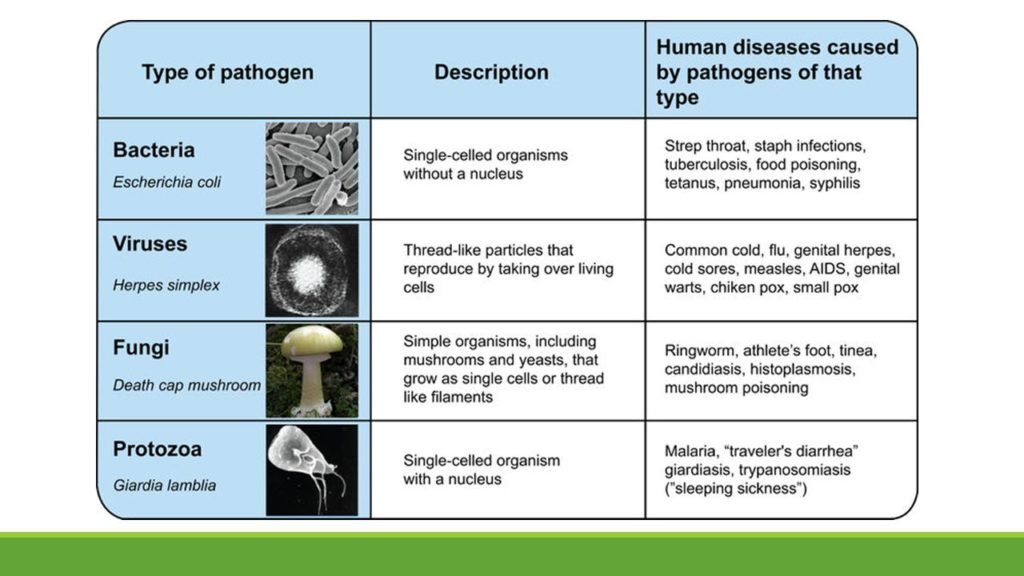Back to: PHYSICAL HEALTH EDUCATION JSS1
Welcome to class!
In today’s class, we will be talking about diseases caused by pathogens and their prevention. Enjoy the class!
Diseases Caused by Pathogens and Their Prevention

Firstly, what is a pathogen? A pathogen is an organism that causes disease. Your body is naturally full of microbes. However, these microbes only cause a problem if your immune system is weakened or if they manage to enter a normally sterile part of your body.
Pathogens are different and can cause disease upon entering the body.
Pathogen types
There are different types of pathogens, but we’re going to focus on the four most common types: viruses, bacteria, fungi, and parasites.
Viruses:
Viruses are made up of a piece of genetic code, such as DNA or RNA, and protected by a coating of protein. Once you’re infected, viruses invade host cells within your body. They then use the components of the host cell to replicate, producing more viruses.
Bacteria:
Bacteria are microorganisms made of a single cell. They are very diverse, have a variety of shapes and features, and can live in just about any environment, including in and on your body. Not all bacteria cause infections. Those that can are called pathogenic bacteria.
Fungi:
There are millions of different fungal species on Earth. Fungi can be found just about everywhere in the environment, including indoors, outdoors, and on human skin. They cause infection when they overgrow.
Fungi cells contain a nucleus and other components protected by a membrane and a thick cell wall. Their structure can make them harder to kill.
Parasites:
Parasites are organisms that behave like tiny animals, living in or on a host and feeding from or at the expense of the host. Though parasitic infections are more common in tropical and subtropical regions, they can occur anywhere.
Diseases caused by pathogens
Pathogens can cause many diseases that range in severity and how they’re transmitted. Let’s look at some of the diseases caused by the different types of pathogens
Viruses:
Viruses can cause several infections, many of which are contagious. Examples of the viral disease include:
- Common cold
- Flu
- Measles
- Yellow fever
Bacteria:
Here are some examples of bacterial infections:
- Strep throat
- Tuberculosis
- Gonorrhoea
Fungi:
Some examples of common fungal infections are:
- Thrush
- Ringworm
- Athletes foot
Parasites:
Some examples of diseases caused by parasites include:
- malaria
- toxoplasmosis
- Intestinal worms
- pubic lice
Protecting against pathogens
The following are ways that you can protect yourself and others against pathogens.
- Wash your hand often.
- Get vaccinated and ensure vaccinations are up to date.
- Prepare, cook, and store meat and other foods properly.
- Stay home when you are sick, especially if you have a fever or diarrhoea, or are vomiting
- Don’t share personal items, such as razors or toothbrushes.
- Don’t share drinking glasses or utensils.
- Protect against insect bites
- Travel wisely by getting informed about health risks and special vaccinations.
In our next class, we will be talking about Food, Nutrition and Health. We hope you enjoyed the class.
Should you have any further question, feel free to ask in the comment section below and trust us to respond as soon as possible.

very easy to understand for kids